Smart charge point regulations explained

EV charging has changed
On 30th June 2022, The Electric Vehicles Smart Charge Point Regulations 2021 came into force (catchy title isn’t it!) changing the way we charge electric vehicles.
On 30th December further developments to these regulations were introduced.
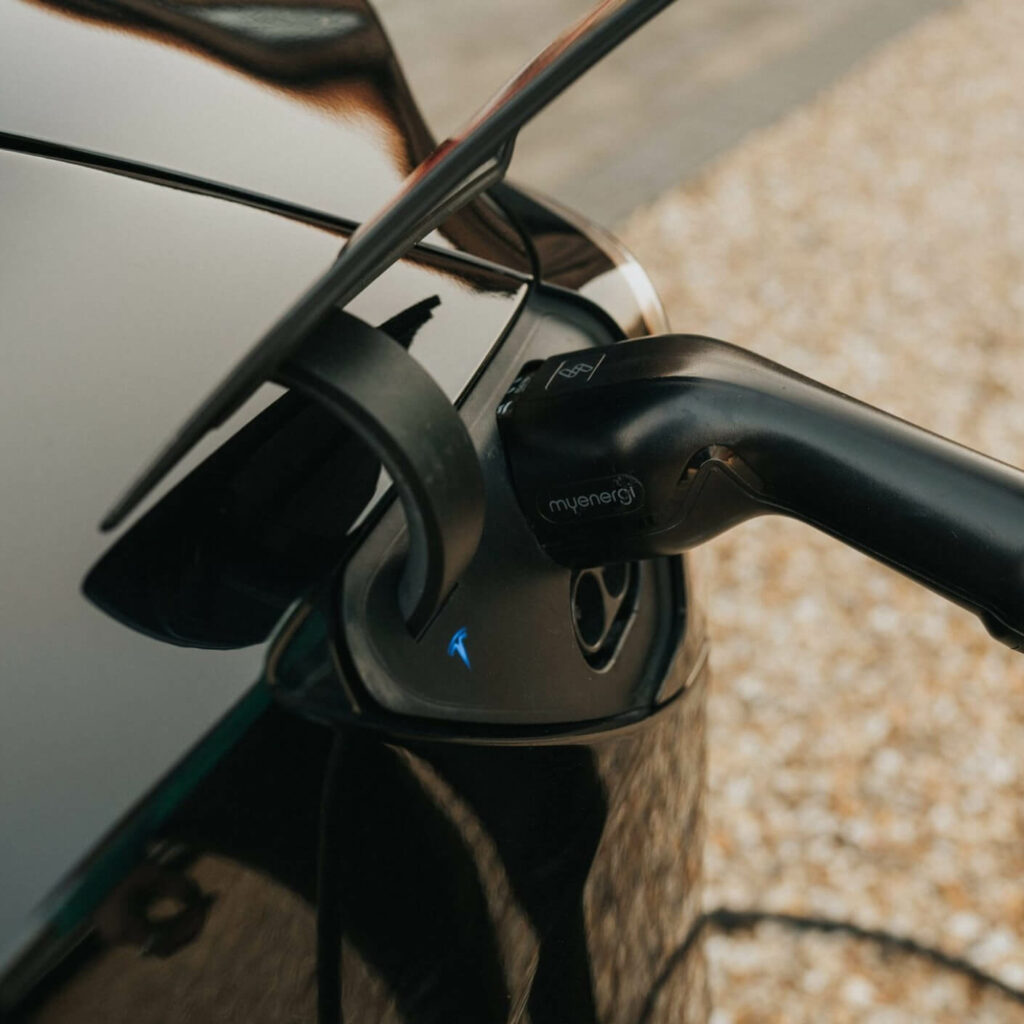
Hang on. Don’t you just plug in and charge?
Well, in theory, yes. Charging your EV at home or work is really simple – although you can charge from a standard (13A) socket – you ideally need to have a suitable charge point installed for topping up your battery.
Previously charge points simply need to be ‘internet connected’ – which often means some nice visual tools in a mobile app – with some charge points also allowing you to set schedules so that you charge overnight when the electricity prices from some energy suppliers are lower.
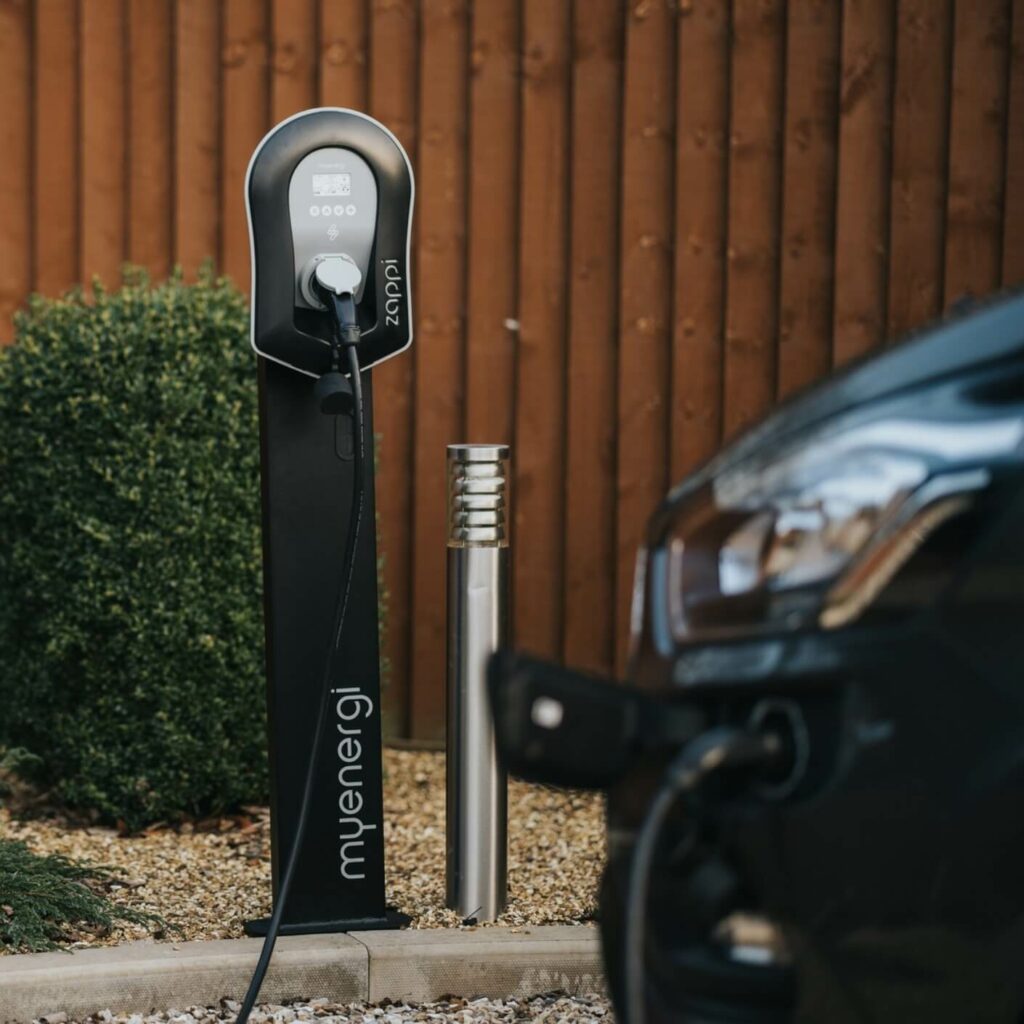
Great for EV drivers, but what happens if every EV starts charging at the same time?
There are lots of people who enjoy spreading doom and gloom about EVs and the electricity supply.
According to the National Grid who manage the electricity transmission network, there is plenty of capacity to meet the future electricity demand – but not if everyone charges at the same time. Which is what the new smart charge point regulations are aiming to solve.
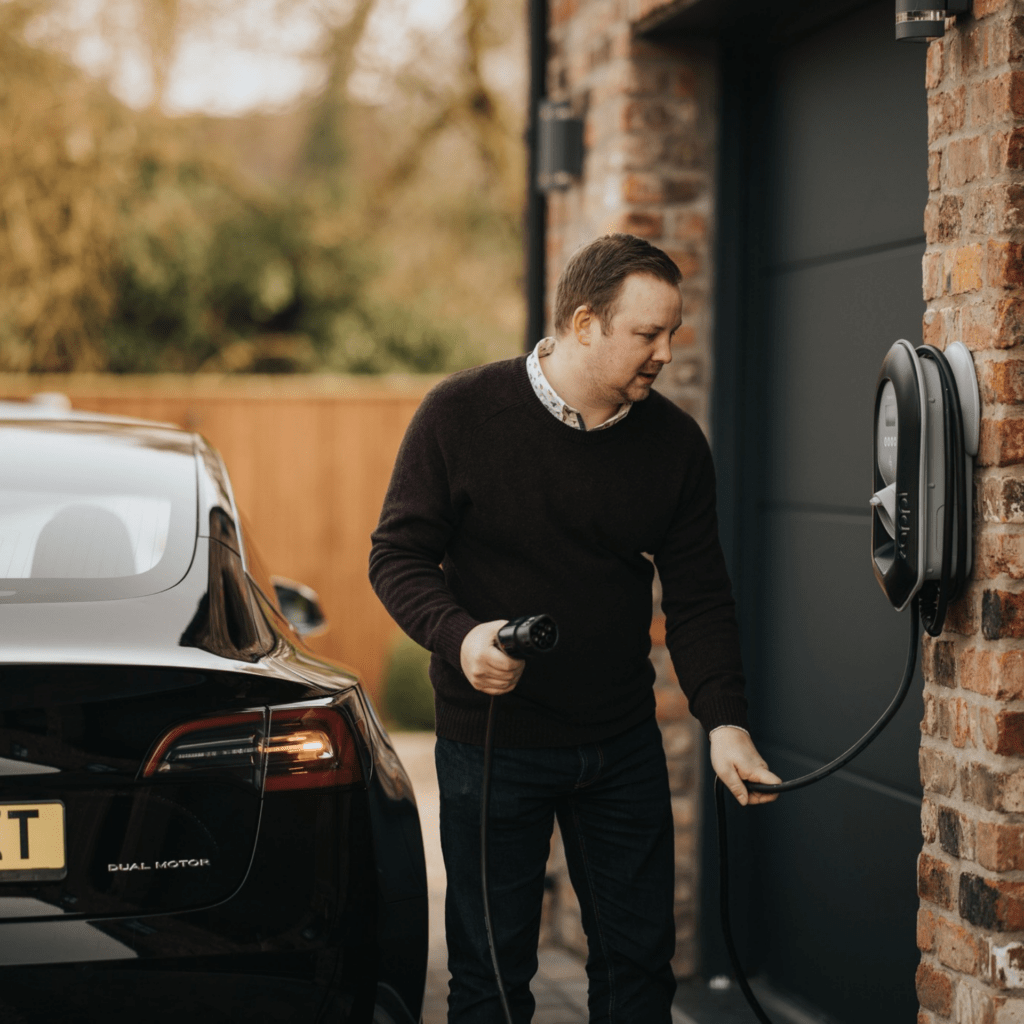
How does the Electricity Grid work?
Although it’s now possible to buy batteries for your home (and of course an EV is just a big battery on wheels) it’s very difficult and expensive to store the vast amounts of energy supplied through the electricity network.
Instead the grid works by continuously balancing the amount of electricity generated by power stations, wind turbines and solar panels to match the total electricity demand at the same time.
If the demand goes up then more generation needs to be turned on. National Grid also have the option to ask customers to reduce their load – something called a “Demand Response Service”.
Smart charge point regulations
The problem we could face with EV charging is that if everyone starts to charge at the same time (ie. at the start of a low price electricity tariff) then the increase in demand will be too quick for the generators to respond… in the extreme case that could lead to power cuts. This becomes even trickier as our grid decarbonises – more renewable electricity generated means we can’t easily switch on more generators, and instead we need to be more intelligent with how we use power.
No wonder the Government are paying attention!

How do the charge point regulations help?
Along with some provisions around cyber security and the protection of customer data, the smart charge point regulations introduce three new requirements:
- Default off-peak charging
- A random delay at the start and end of the charge
- Steps to promote customers to sign up to Demand Response Services
A further two requirements were added as of 30th December:
- Further cyber security improvements
- Inclusion of a tamper detection kit

Optimum charging
Charge points are now set up so that the EV charges at the best time for the electricity network. The peak demand – or rush-hour periods on the grid – happen in the morning and late afternoon, so by default EVs will only charge overnight or during the middle of the day. myenergi zappi’s are set to charge in off-peak hours by default (00:00—08:00). That’s good for the grid and better for the environment (as generation tends to produce more CO2 during the peak periods meaning we rely more on gas fired power stations at these times).
If you’re used to your EV charging as soon as you plug it in, or you’re desperate for a charge, then you can override these settings, but the intention of the new smart charge point regulations is to encourage more EV charging at the off peak times.
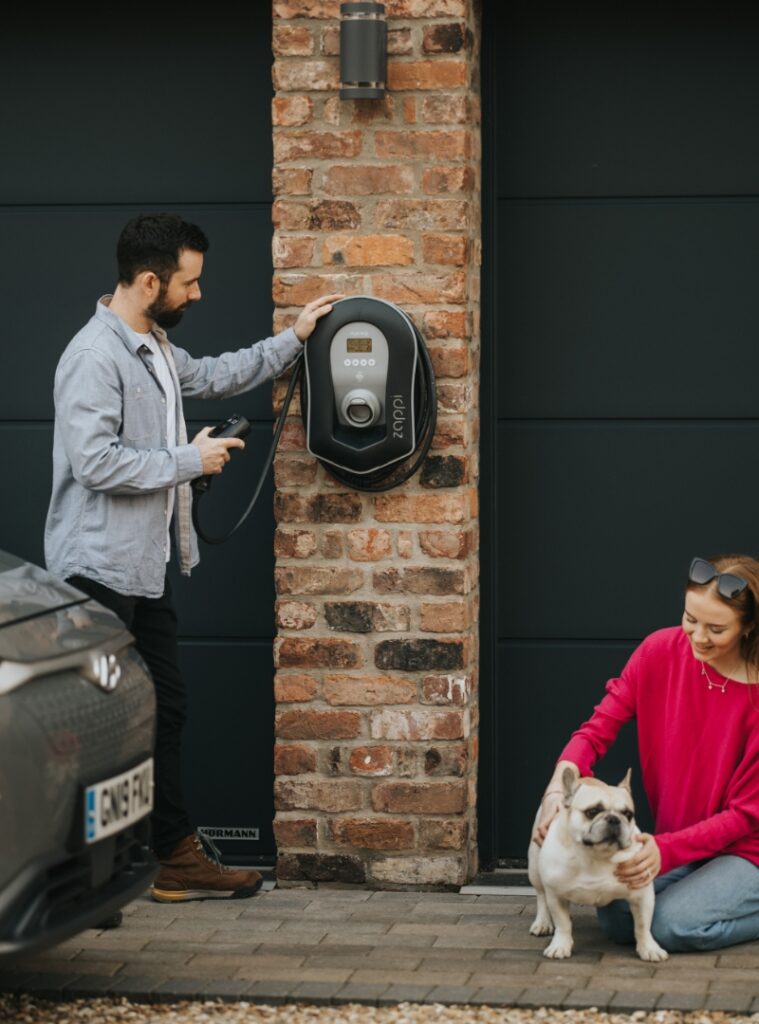
Random delay charging
As of June 30th, every new EV charger sold now includes a ‘random delay’ of up to 10 minutes every time an EV starts to charge.
It also effects on anyone using a low price tariff; let’s say that the tariff runs from 00:30 to 04:30am. Instead of starting to charge at 00:30, the EV might not start charging until 00:40 which means the customer has lost out on a few minutes of low rate electricity. Similarly, the charge may not stop until 04:40 – so that’s 10 minutes of charging at the higher electricity tariff.
This is not a huge cost on a single daily charge, and most EV drivers consider this a small price to pay to keep the lights on, but it’s important that we explain these new changes to avoid confusion.
To give you extra peace of mind a message will display in the myenergi app when the random delay is active.
Demand Response Services using domestic loads are quite rare. myenergi were part of the “FRED” trial which was one of the first to demonstrate how EV’s could be used on large scale to balance the grid.
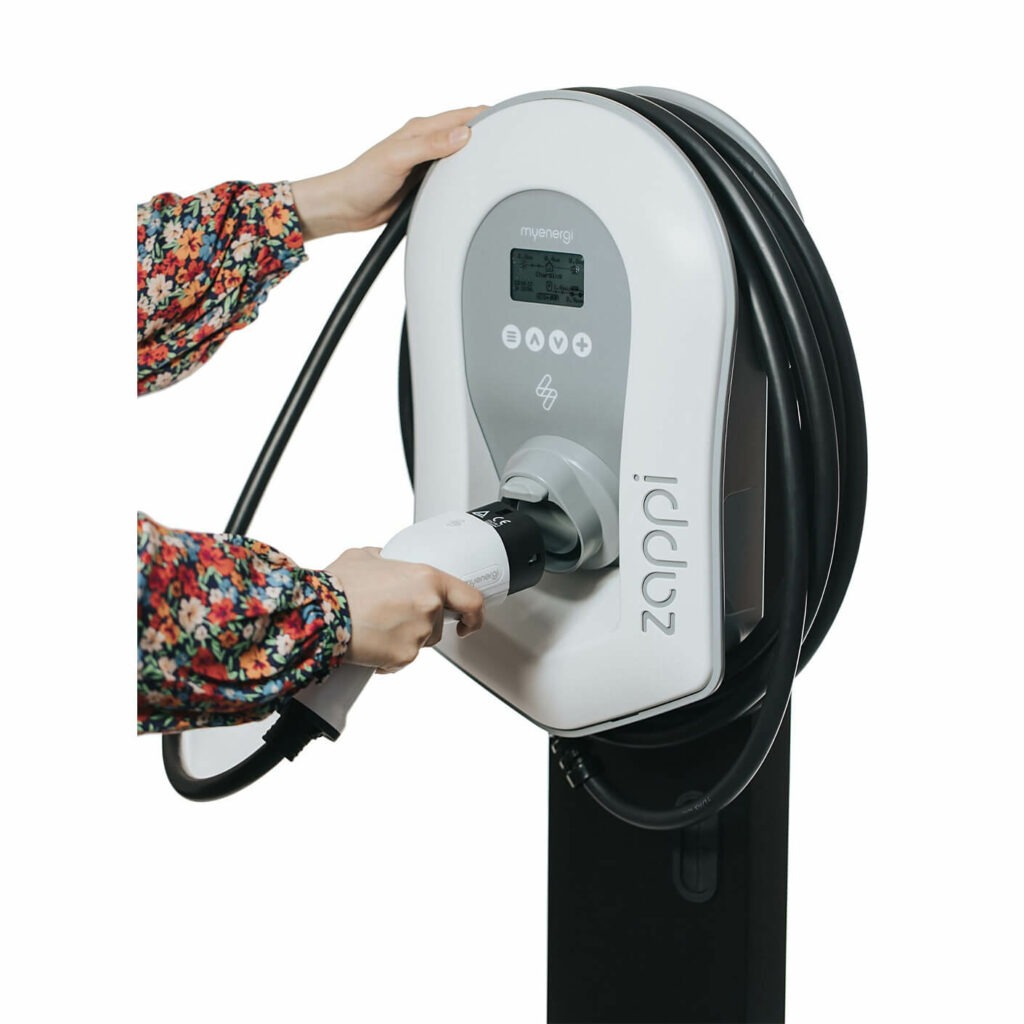
Smart Green Electricity Grid
The Government have recognised that with millions of EV’s all plugged into the grid that we have a huge battery that can be used to help balance the grid. However, that won’t work if there’s a 10 minute delay every time National Grid need to call on that reserve. Operators in the energy system, including distribution networks and energy suppliers also have the option to ask customers to change the time or rate of their charge this is called Demand Side Response Services (DSRS).
That is why any EV charger that is providing DSRS is excluded from the 10-minute delay. There is a lot to do to explain these services to EV drivers so they are happy to sign up and pass some of the control of their charging to a third party. This is an important step towards the smart, green electricity grid.
How does zappi work with DSR?
Demand Side Response (DSR) is a mechanism to allow energy aggregators to temporary pause the charger during periods of extreme high demand in order to prevent issues such as black outs.
As part of our commitment to decarbonising transport and in accordance with Electric Vehicles (Smart Charge Points) Regulations 2021 your device will be enrolled into Demand Side Response (DSR) services managed by our software partners Axle Energy on our behalf.
This will simply result in the charging speed being changed at times of increased grid demand or for test events. However, you will be notified ahead of time of a coming event and you will be able to opt out of that event if you wish. Except in truly exceptional circumstances, you should receive at least 24 hours notice.
If you are already enrolled with another DSR provider it will not be changed. If you choose to change your DSR provider in the future you will be able to. We are aiming to enrol people not already responding to grid support events.
You can opt out of DSR at anytime by switching it off in your myaccount area. Follow the link here
Opt outFrequently asked questions
Randomised Delay
Why is there a random delay when my charge starts?
Making a small change can have a big impact. If everyone starts or stops charging at the same time the load on the grid will increase too quickly for the electricity generators to respond. The randomised delay stops this happening by making sure that everyone does not start to charge at the same time (for instance, if lots of people have set a scheduled charge to match their electricity tariff.) Following the new regulations, zappi will randomly wait up to 10 minutes after the scheduled charge time to start charging and at the end when the charge is stopping.Can I turn off the delay permanently?
No. As set out in Government legislation, the delay must happen when your car is charging from the grid, to ensure that energy demand is kept stable at all times of the day.How long does the random delay last for?
The delay will be no longer than 10 minutes, and it will start when your charging session is due to commence. For example, if you come home from work at 5pm and plug your car in, and you have a schedule set to start at 1am, the delay will start at 1am. This also applies at the end of your charging session, unless your car is already full – in which case, the car will stop chargingCan I override the random 10 minute delay if I need my car to start charging immediately?
Yes. This can be done by pressing the (+) button on the zappi device, or using the EV screen in the mobile app.Does randomised delay mean there could be a 10-minute delay before I can un-plug my car?
No, randomised delay only applies on a scheduled charge event. You will still be able to unplug straightway, by either unplugging the cable from your vehicle or stopping the charging session on zappi or in the myenergi app.What is randomised delay at the end of my charging session?
Managing the grid is a balancing act, demand and supply must be carefully balanced. Imagine if everyone stopped charging at the same moment, this could cause a huge drop in demand on the electricity grid, which could cause grid instability. To prevent this, randomised delay will mean your car might stop charging up to 10 minutes after its scheduled stop time.I like to charge so that I match the off-peak hours on my electricity tariff, what does randomised delay mean to me?
Randomised delay means your charging session might take up to 10 minutes to start and could overrun by up to 10 minutes after your scheduled time. Keep in mind that the delay could be anywhere from a few seconds up to 10 minutes and is different each time. Sometimes you will not even notice it.Will there be a delay when using my surplus local generation to charge my car?
Randomised delay does not apply when charging from your own surplus generation (Such as Solar or Wind) when in ECO or ECO+ mode.Does randomised delay mean my car could be overcharged?
No, your vehicle will stop the charging session as soon as your vehicle is full or reaches its target battery level regardless of any delay.Can I override the schedules you’ve set?
Yes. You can simply update them on your zappi device screen by going to the ‘charge settings’ menu, or by using your myenergi app.How do I reapply the default schedules?
You can reapply the default schedule by accessing the timed boosts section in your myenergi app, where the default hours are pre-set for you. The start time and days this applies to are already set. Simply select ‘Set’.Why does my zappi have schedules already programmed?
One of the intentions of the Smart Charging Regulations is to encourage EV drivers to charge their cars during times where demand on the energy grid is lower. To meet this requirement, we have set a default off-peak schedule between 00:00 – 08:00, to promote the benefits of charging during these times. This time overlaps with many of the cheapest dual rate and EV specific tariffs.I’m on a Dynamic Time of Use energy tariff, do these regulations still apply to me?
Yes they do. All energy tariffs are subject to the regulations so the random delay will also be applied at the start and end of each scheduled charge period.You can schedule your EV charging around your tariff, rather than sticking to the default times, using the “My Schedules” feature in the myenergi online account “myaccount” or by entering them in the myenergi app.


